Have you heard of the “Pareto principle”?
It’s known as the 80-20 rule, where 80% of the results is due to 20% of the effort.
So, what does this mean?
For a business, 20% of its clients produce 80% of its revenue.
For a software, 20% of its features cause 80% of its usage.
And for a trader, 20% of your actions produce 80% of your results.
Now… there are so many things a trader can focus on. Entries, exits, risk management, position sizing, fundamentals etc.
But the question is…
Which are the 20% that you must focus on, to deliver the biggest results?
So, this is what you’ll be learning today…
The 10 best forex trading tips that you can learn in 10 minutes, that will improve your trading immediately.
Are you ready?
Then let’s begin.
1. Don’t scare yourself out of a trade by going into lower time frames
Look:
One of the important forex tips you’ll learn is that if you enter a trade on the daily time frame, then manage that trade on the daily time frame.
A big mistake you can do is, drilling down into a lower time frame, and scare yourself out of the trade.
Here’s what I mean…
Long set-up at (EUR/GBP):
Lower timeframe of the set-up at (EUR/GBP):
Missed profits at (EUR/GBP):
The takeaway is this…
If you enter off the daily time frame, you set your stop loss and manage your trade on the daily time frame.
If you enter off the 1-hour time frame, you set your stop loss and manage your trade on the 1-hour time frame.
If you enter off the 15 minutes time frame, you set your stop loss and manage your trade on the 15 minutes time frame.
Get it?
2. Place your stop loss at a level where your trading setup is invalidated
Don’t set your stop loss based on a dollar amount you’re willing to lose.
Instead…
Set it based on the structure of the markets, where if your stop loss is triggered, you know you’re wrong.
For example, if you’re long at support, then a break of support would mean you’re wrong…
Or if you’re trading a breakout, then a close back into the range would mean you’re wrong…
If you want more examples and discover set-and-forget trading methods… go watch this training video below:
3. Trading with the trend increases the probability of your trades
Another one of the forex tips you’ll learn is that when the market is trending, it has an ebb and flow with two different “legs” in it.
Impulse move – Longer “leg” that trades in the direction of the trend
Corrective move – Shorter “leg” that trades against the direction of the trend
By trading with the trend, you’ll get a bigger bang for your buck as the impulse move is stronger than the corrective move. This gives you greater profitability for the same amount of risk.
Here’s what I mean:
The trend is your friend… right?
4. You need to find a trading method that suits you
If you love watching the markets and have all the time in the world, then a long-term trend-following approach (which is one of the set-and-forget trading methods to approach the markets) will not suit you. You’d micromanage your trades on the shorter time frames, and miss the longer-term trend.
Or…
If you have a full-time job and can’t afford to watch the markets, then intraday trading will not suit you. You’d miss trading opportunities because you do not focus on the trading session.
Or…
If you love to build systematic trading systems, then learning how to read chart patterns and price action will not suit you. You’d be frustrated because there are some things in the market that can’t be quantified.
So what’s my point?
My point is… you need to find a trading approach that suits you, yourself.
Here’s how you can increase the odds of your success:
- Adopt a trading method that fits your belief about the markets (if you don’t believe in trends, then trying to be a trend follower is ridiculous)
- Find a trading time frame that suits your schedule (if you have little time to trade, stick to the higher time frames)
- Don’t hop from one trading system to the next, just because you see another trader having success with it (that’s a sure-fire way to remain a consistently inconsistent trader)
As long as you nail this down…
You’re closer to being consistent than most traders out there, and no amount of forex tips can help you unless you do the work.
Got it?
5. Don’t abandon your trading strategy after a few losing trades
Why?
Because no matter how good a trading strategy is, in the short run your results are random.
And this can be explained using the law of large number…
If you take a coin and toss it 1000 times, you’d get close to 50% heads and 50% tails.
However, if you toss it 10 times only, it’s unlikely to be 50% heads and 50% tails due to the small sample size.
And its the same in trading…
You cannot conclude a trading strategy doesn’t work based on a small sample size because, in the short run, your results are random.
Instead… you need a minimum of 100 trades to find out whether your trading strategy has an edge in the markets.
6. A trading plan makes you a more disciplined trader
One of the biggest reasons why you fail as a trader is because you don’t have a trading plan.
You’re trading decisions based on your emotions, subjectivity, and opinions of the market.
Getting into trades because:
- Of an “insider tip” you heard from a friend
- You think price can’t go any lower
- You’re bored
And here’s the thing…
If you have an inconsistent set of actions, how do you expect to have a consistent set of results?
Here’s the thing:
The only way you’re going to achieve consistent trading performance is by having a consistent set of actions, and this can be achieved by following your trading plan, and that, my friend, is the most important out of all of the forex trading tips in here.
If you want to learn how to develop your trading plan, read this post here.
7. Risk 1% on each trade to prevent your own destruction
Imagine:
You have a trading system that wins 50% of the time with 1:2 risk reward.
And you have a hypothetical outcome of L L L L W W W W
It’s a profitable system, right?
It depends.
If you risk 30% of your equity, you’d blow up by the 4th trade (-30 -30 -30 -30 = -120%)
But…
If you risk 1% of your equity, you’d have a gain of 4% (-1 -1 -1 -1 +2 +2 +2 +2 = 4%)
Having a winning system without proper risk management isn’t going to get you anywhere.
You need a winning system with proper risk management.
And not forgetting…
The recovery from the risk of ruin is not linear, it could be impossible to recover if it goes too deep.
If you lose 50% of your capital, you need to make back 100% to break even.
Yes, you read right. 100%, not 50%.
That’s why you always want to risk a fraction of your equity, especially when your winning ratio is less than 50%.
So, how much should you risk exactly?
This depends on your winning ratio, the risk to reward, and your risk tolerance. I would advise risking no more than 1% per trade.
8. You don’t need to know everything to be a profitable trader
Why do I say that?
Because I made the mistake of thinking I needed to know everything, in order to make money from trading.
And my turning point was when I realized that, less is more.
“Simplicity is the ultimate sophistication – Leonardo Da Vinci”
Now, I’m here to tell you this:
- You don’t need to know any fundamentals of the market you’re trading
- You don’t need to know what the big players are doing
- You don’t need to know what is a pivot point
- You don’t need to know what is a Crab pattern
- You don’t need 6 monitors to trade
- You don’t need to purchase any proprietary software, tools, or indicators
- You don’t need to subscribe to a forex trading daily tips service
And you can still be a consistently profitable trader.
Now you’re probably wondering:
So, what do I need?
Go watch this training video below as I’ll explain further:
9. Keep a trading journal if you’re serious about trading
Do you recall the past trades you’ve taken?
Perhaps there’s a chart pattern that is showing a high probability of success.
Perhaps your trading strategy that isn’t working well in current market conditions.
Perhaps you’re not following your trading plan which is causing your performance to deteriorate.
Now, if you don’t have a trading journal…
How do you know what you’re doing wrong?
How do you know what you’re doing right?
How do you know what can you improve on?
Get my point?
So, if you’re serious about trading, you must have a trading journal. And you can learn how to create one here.
10. One “trick” to improve the returns of your trading performance
No, it’s not adding another “filter”.
No, it’s not adjusting the parameters of your indicator.
Its… knowing when to stay out of the markets.
Here’s an example:
Let’s assume a trend following strategy would make 20% in a trending market, and lose 15% in a range market.
In a given year, the market was in a trend once, and in a range once. Thus netting a return of 5% (20 – 15).
Now, what if you can identify the range market, and stop trading during that period, would your returns improve?
You bet.
Instead of earning a return of 5%, you made 20% because you stopped trading when the markets weren’t favorable.
The takeaway is this…
You need to know when to stay long.
You need to know when to stay short.
And you need to know when to stay out.
“It’s equally important to know when to stay in, and when to STAY OUT of the markets.”
Once you nail that down, you’ll be producing forex trading daily tips on your own without you knowing it!
Here’s how I feel…
I wished someone had shared with me these 10 forex trading tips when I was starting out. It would have reduced my learning curve, and saved me a ton of frustration.
Frequently asked questions
#1: How do you handle an up trending stock that has minimal volume?
I trade stocks which are in the Russell 1000 which has volume and liquidity.
#2: If I have a small capital of $3,000, how do I trade more expensive stocks and still keep within the 1% risk per trade?
If you only have $3,000, then it might be difficult. If the share price is far too expensive for you to manage your risk properly like Amazon’s shares for instance, then you should avoid trading expensive stocks.
Alternatively, you could use a tighter stop loss, but that might not make sense for your trading especially if you trade on the higher timeframe.
Generally, if you can’t trade the stock because it’s too expensive, then you should just skip it altogether. Don’t force the trade and end up risking 40%, 50% of your account, which could be very painful if the trade goes against you.
#3: What’s the difference between a ‘trading plan’ and a ‘trading journal’?
A trading plan tells you when to enter a trade, how much to buy, when to sell. They’re basically your “rules of engagement”. It encompasses your trading setup, your risk management, your trade management and stuff like that.
If you want to discover more on what goes behind a trading plan to make you a consistently profitable trader, then check this out.
A trading journal, on the other hand, is a journal to record down your trades so that you can track your progress over time. You can write down things like your trading setup, the date of the trade you’ve entered, the profit you’ve earned, etc.
You can also click here to find out how to create your own trading journal and find your edge in the markets.
#4: How do you handle an up trending stock that has minimal volume?
I trade stocks which are in the Russell 1000 which has volume and liquidity.
#5: If I have a small capital of $3,000, how do I trade more expensive stocks and still keep within the 1% risk per trade?
If you only have $3,000, then it might be difficult. If the share price is far too expensive for you to manage your risk properly like Amazon’s shares for instance, then you should avoid trading expensive stocks.
Alternatively, you could use a tighter stop loss, but that might not make sense for your trading especially if you trade on the higher timeframe.
Generally, if you can’t trade the stock because it’s too expensive, then you should just skip it altogether. Don’t force the trade and end up risking 40%, 50% of your account, which could be very painful if the trade goes against you.
#6: What’s the difference between a ‘trading plan’ and a ‘trading journal’?
A trading plan tells you when to enter a trade, how much to buy, when to sell. They’re basically your “rules of engagement”. It encompasses your trading setup, your risk management, your trade management and stuff like that.
If you want to discover more on what goes behind a trading plan to make you a consistently profitable trader, then check this out.
A trading journal, on the other hand, is a journal to record down your trades so that you can track your progress over time. You can write down things like your trading setup, the date of the trade you’ve entered, the profit you’ve earned, etc.
You can also click here to find out how to create your own trading journal and find your edge in the markets.
Now what I’d love to hear from you is this…
What is the best forex trading tip you would give a trader, that will have the biggest impact on his trading?
Leave a comment below and let me know what you think.



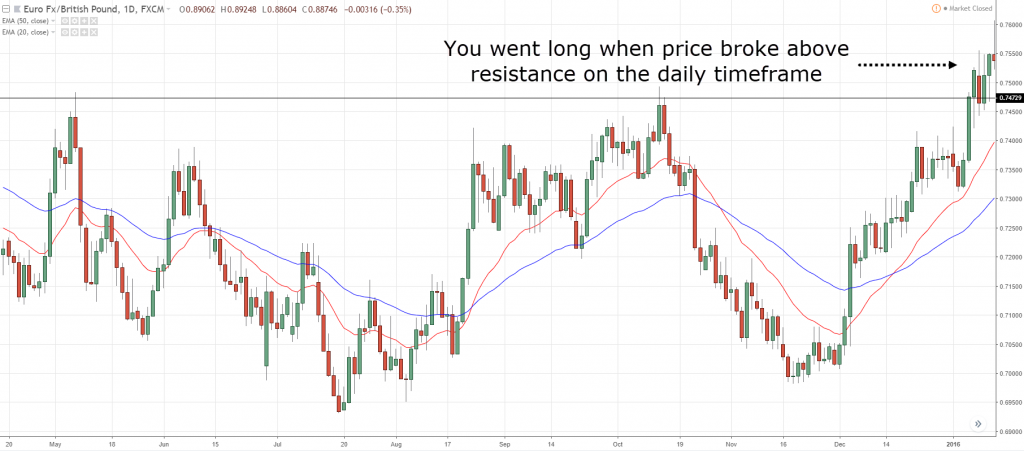
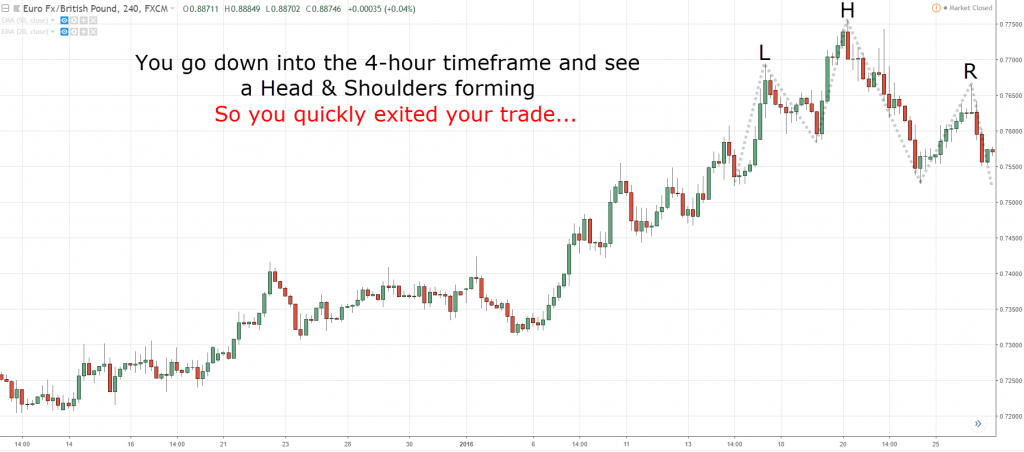
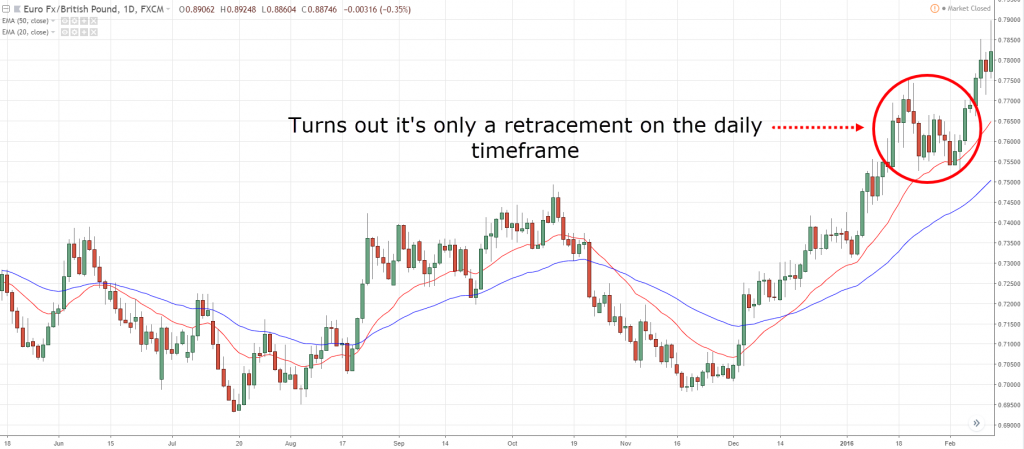
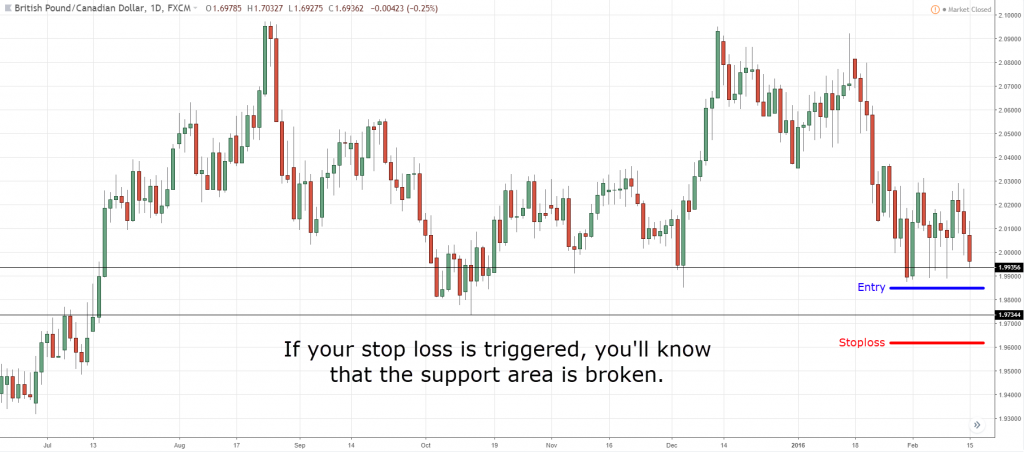
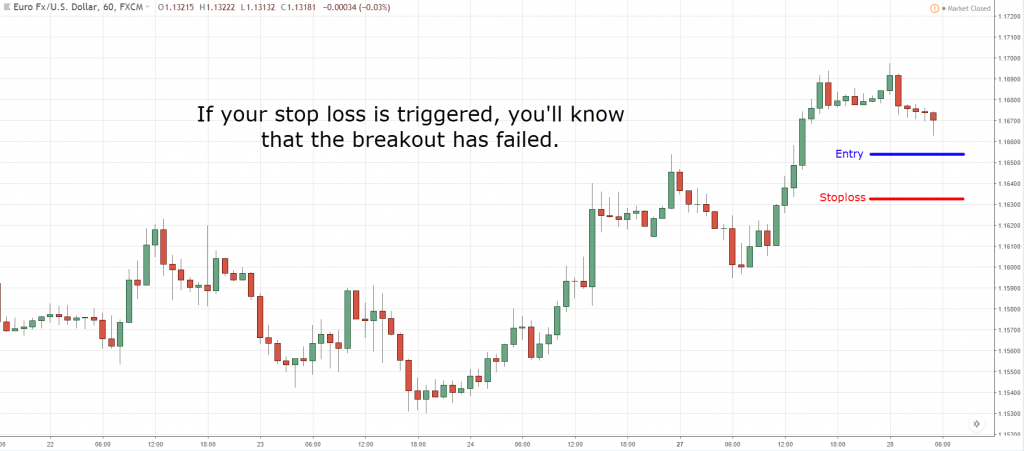
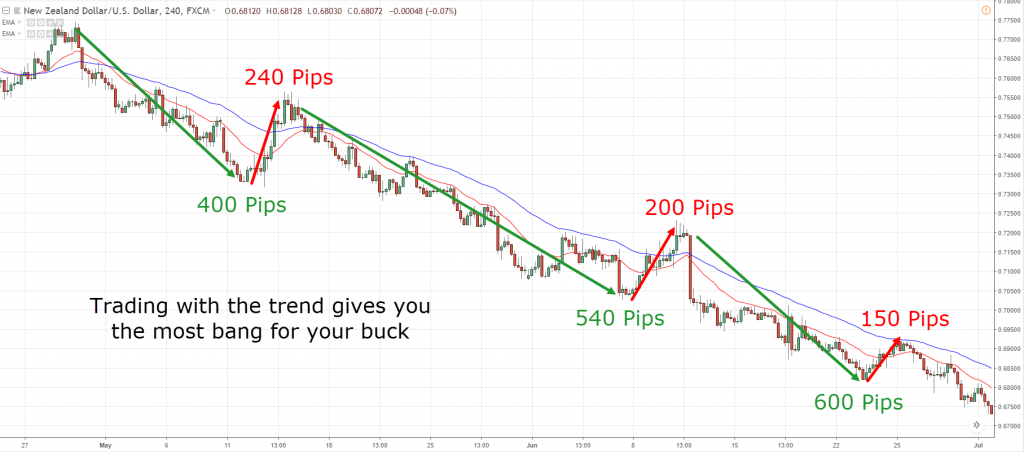
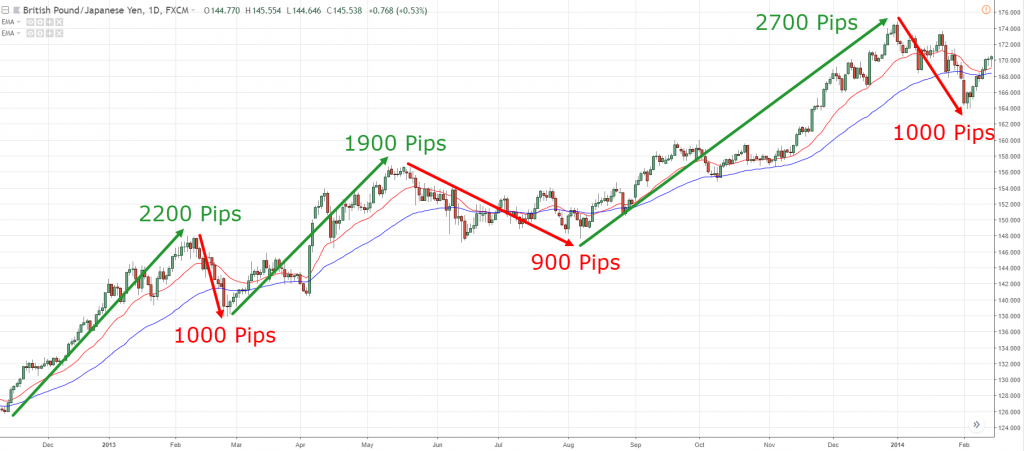
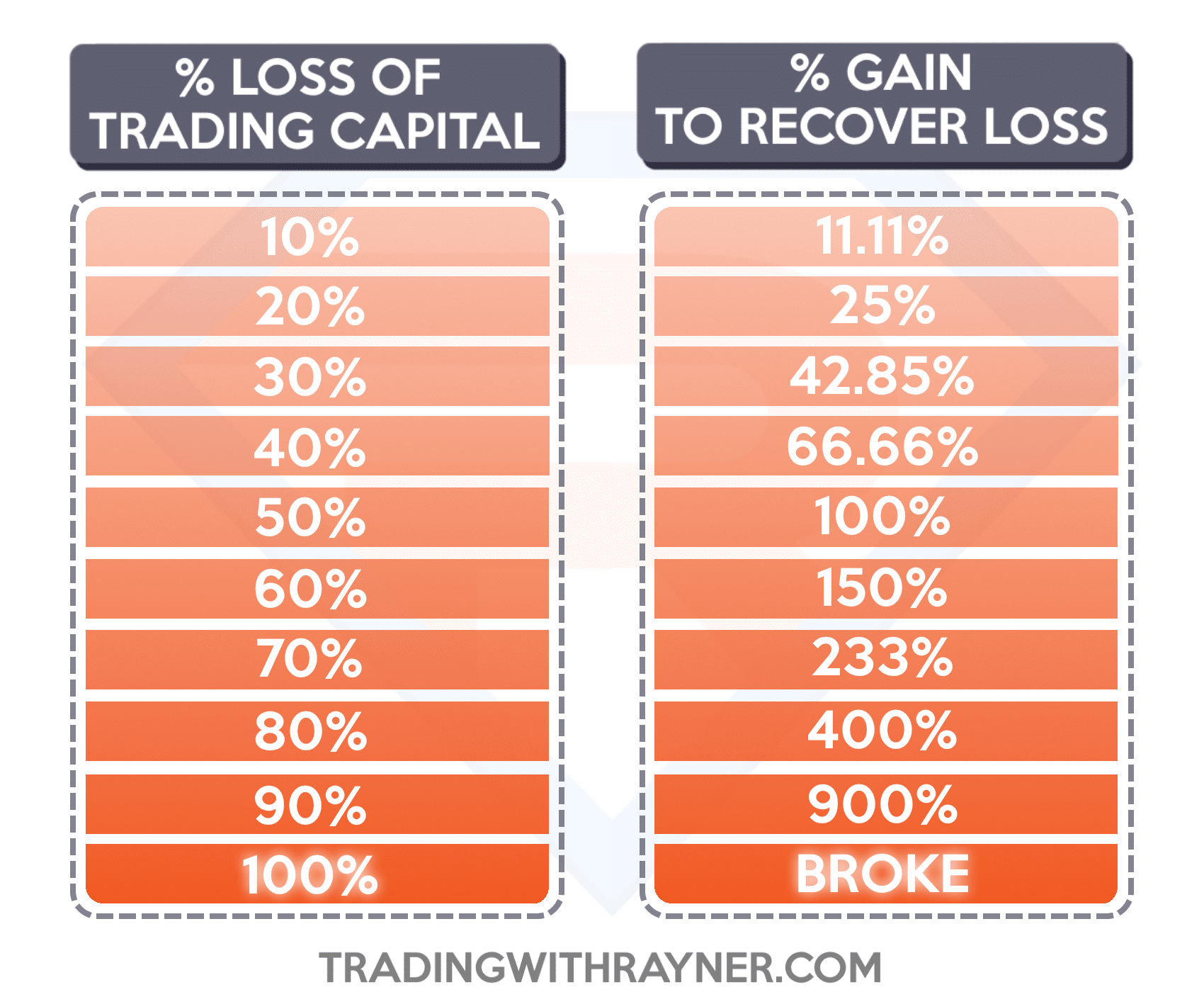
Hi rayner,
My tip is you cannot call yourself a trader until you know where your stop is and can accept it otherwise you are just gambling.
Hi AA,
Knowing when to exit is as important if not, more important than the entry.
Thank you for sharing.
Rayner
You are the best teacher Rayner. I give you credits for that.
My best lesson is you should find a trading system that suits you.
Great advice, Harry
Position size is paramount. Learn to protect capital. Stay in the game until u “get it.”
Hello Marcus,
Position sizing and risk management goes hand in hand.
Totally agree.
Rayner
Rayner. I think you are 50 or 60 years old behind that young face……you are SO very wise. Thanks for sharing these 10 tips. They are awesome.
The tip I have found useful is position size to have a wider stop. Eg. Trade a smaller size with a wider stop within your risk tolerance so that you give trade the chance to work out and not get stopped out. Getting stopped out is a psychological drain and you can keep that drain at a minimum with this trick.
Second trick is EXPECT to be stopped out 2/3 times or more. If you already go in the trade with that thinking, you will make sure that you can AFFORD the stop.
Third (still learning this one) – enter your buy and sell order at the same time. No mental stops. And then, DONT move your stops. Profitable Trading.
Hi Happy,
Those are really good tips you shared! I really like the second trick of yours, enter trades with expectation to lose, helps with the psychology a lot. Especially for me.
And thank you for your kind words, I’m flattered.
I hope to hear more from you in the near future.
Rayner
Hi Rayner, how do you handle an uptrending stock but with minimal volume? And how do you determine your risk?(i mean its hard to get in and out wihout much volume) and how do you anticipate the start of an uptrend. I wish to enter the start of an uptrend. Thank you.
Hi Trillionaire,
I don’t look at volume in trading because to me, price comes first.
I focus on liquid markets so I can get in and out of positions with ease.
Rayner
Basically I got jam impressed by 80/20 .
I can say it is eye opening reality to look market for me
Hey Sun,
The 80-20 rule works almost across all industry.
I was amazing when I first heard of it too.
Rayner
Sir
after follow your guideline , I am in position of trend follower but still to improve a lots …need guru like you. thanks of help..
I fell confident when into the market more relax…not takut takut lah(scared) lah..
Ok
life good feel good
cheers
Hi Ramli,
Great to hear you’re improving.
Keep up the great work. Don’t hesitate to let me know if you’ve got any questions, I’ll be glad to help.
Rayner
why does the price move? once you find out why the price moves you can plan a strategy around this with proper risk management to predict the direction of the price. The price isn’t interested in back history what its made a certain pattern, it isn’t interested in most things of back price action because none of it is driving the current price, find out why it is moving and you will have an edge. A ex bank trader told me this when he was learning me FX and the reason why 90% of retail traders fail because they follow what they are taught on the internet and not what’s important. Apply risk management, position size and discipline to the answer at the beginning and you will have an advantage
Hey Carl,
Thank you for sharing your tips.
In essence trade what you see, not what you think.
Risk management is definitely a top priority in any trader’s mind.
Rayner
Hi,
Always thanks for your genuine and good sharing . You are one of the good traders companion in trader’s journey, at least for me.
One of the trading tips and can say #1 in my list will be to KEEP AND WRITE TRADING JOURNAL. My performance change to near 20% RETURN biweekly!! I always thought is my lacking of my trading strategy/skills or didn’t get into full time trading makes my trading performance stagnant and making mistakes is quite normal for part time traders(always give excuse when you don’t have a trading journey with you) .
Never been so wrong in my life is not to WRITE AND KEEP A TRADING JOURNAL with me. It make me more consistent and disciplines, most important is to honest with myself and know more about my style of trading and maximize your real performance (by reducing the chances of making mistake as you now spend more time on organised your trading plan and your past trading, no more lies and excuses as everything is recorded and can be refer!).
I will write a trading journal daily now not matter how tired I am. I am sure it will certainly help in your trading too!
Hey Amazing,
That’s a good one. Far too many traders are caught up with the entries and strategies that they forget about their trading journal.
I believe you will see an improvement to your trading performance by reflecting and record your trades consistently.
Keep me updated on your progress bud.
Rayner
Sure Rayner!
#1 tip: Keep it simple
Hi Peter,
That’s short and sharp.
Rayner
Hi Rayner, thank you for an excellent post that summarises the important issues so well.
I have found that by planning my trades properly before entering the market i.e. setting my entry, stop and exit points/mechanism up front and then trade and forget, to be be of great benefit.
Hello Neill,
Yes preparation ahead of time is definitely a big one for me as well.
I hope to hear more from you in the near future.
Cheers!
Rayner
All analysis are good but stick to one the most two so that it will give you a good guidance to trade.
Hey Nazda,
Yes that’s true so a trader will be faced with analysis paralysis.
Rayner
I will tell traders to find out there own trading style which they can perform good and enjoy .
Hi Kishor,
Thank you for sharing, hope to hear more from you in the near future.
Rayner
Number #1 tip would be:
Learn to be DISCIPLINED!
Every serious trader knows the rules of successful trading, like having an edge, MM and psychology involved, but every day implementation of these will only work with ironclad DISCIPLINE!
George
Hi George,
I couldn’t agree more.
Rayner
Hi Rayner,
Thank you for another informative post.
I believe the most important thing is two fold:
1. Develop a detailed trading system e.g. one based on your book The Ultimate Guide To Trend Following .
2. Be disciplined and obsessive about following it.
I wish good trading to you and all your readers.
Please keep up the excellent messages.
kind regards
Laurence
Hi Laurence,
Thank you for sharing.
And I appreciate your kind words.
Rayner
Hey Rayner,
Firstly let me thank ou for all the lovely blogs that you have penned. They have really been very insightful.
So few things that I’d like to add to your above points:
1. A trader should treat his losses as businessman’s risk and should be comfortable with it. For this to happen, he should be in a position to ‘accept’ the losses when he puts his Stop Loss. If he can mentally accept the loss he can objectively focus on other trading opportunities and can stay in multiple trades at a time.
2. Another important thing is trader should learn to trade without fear and always understand that each trade is unique from previous trade. If one has had 5 losing trades in a row doesn’t mean that even next one has to be a loser. Your 6th trade is completely different and has no connection with any of your previous trades. So one should confidently take his next trade even if hes face few losers.
Thanks
Harsh Shah
Hi Harsh,
Thank you for sharing your tips.
#1 really resonates with me. Trading is a business, and losses are just simply the cost of doing business (like how any traditional business has utility bills to pay, rent etc).
Rayner
Hi Rayner,
If i have a small capital of say $3000, then not risking more than 1% of my trade means i can only trade a stock for $30. That is not feasible. So how do i trade stocks with higher value given my limited capital, yet still keep within the 1% risk?
Hi Glen,
If you have $3000, then its not possible to trade stocks using proper risk management.
You may have to consider other alternatives like the forex market, or increase your capital base.
This article here explains more.
Rayner
I agree with Rayner, its gonna be quite hard with 3k, I would say 10 to 20k is enough though, so not impossible. Amazing post man
Hi Bullinstu,
Glad you enjoyed the post.
I hope to hear more from you in the near future.
Rayner
Here is another way to look at the % rule…
https://www.incrediblecharts.com/trading/2_percent_rule.php
Basically, the % of your capital is where you put your stop. So, if you have $3000, you are positioning your stop so if things go south on you, you won’t lose more then $30. I’ve always heard it as the 2% rule…
Which is why it is good discipline to also put your stop immediately after you place your trade.
Thank you for sharing, Chris.
I appreciate it.
Hi Rayner,
Thanks for the excellent post, as always.
I want to understand, is there a different between planning trade to a trading journal, or it’s the same idea but in different form?
Hi Shlomi,
A trading plan would dictate your entries, exits, trade management, setups etc.
A trading journal would record the trades you took with screenshots of your charts etc.
Hope that made sense to you.
Rayner
Ok. I already got both of them, but I need to sharp my advantage from them.
Hey Shlomi,
Yes, keep working on it.
Cheers
Rayner
Hi Rayner
Thank you so much for your kindness and generosity.
You are so much help to so many people, i don’t know where you find the time,
but you always do.
I have been studying forex for about 10 years now and your #1.
You never have a bad word.
You are so thoughtful in you desire to help others.
congradulation on being a dad.
You deserve the best.
i get frustrated sometimes, and stop for a while but keep coming back.
Now with you by my side i feel more support and moving forward again.
thank you,
Bob
Hello Bob,
Thank you for sharing your experience. I’m glad you found the materials useful.
Trading can be a lonely journey and I’m glad to lend a helping hand in any way I can. Don’t hesitate to let me know if there’s anything, I’ll be glad to help.
Rayner
Hi Rayner,
Really good tips. Helped me a lot. Thanks for sharing.
Srinath
Hi Srinath,
You’re most welcome. Glad to hear that! 🙂
Don’t hesitate to let me know if there’s anything, I’ll be glad to help.
Rayner
Tip1: Get a proper attitude
Change attitude from get rich quick (no place for learning and making mistakes)
to: every trade is a lesson for me, I love to to make mistakes, correct them and trade again.
I am enthusiastic on the way to achive you disired success becouse everyday I am getting better and better. Continous improvment.
Tip3: Start trading with as small position size as possible and increase it gradually only when you are profitable (dont add to a losing position – in this example losing bussines)
Tip3: Keep a journal
Write everything down: reasons why you take the trade, mistakes and how to correct them, ideas, observations, lessons learned from Mr. Market, feelings, thoughts and more.
I prefer handwriting in my notebook and Filofax organizer.
Hi Mjablo,
Some great tips you’ve shared. I appreciate it.
Rayner
I should add one more:
Tip 4: Don`t be follower be student, listen, read, watch what other traders want to share but make sure what you finally do (trade) is a product of your own conclusion (tests) .
Well said my friend. Very well said.
Again! Great sharing Rayner! You are rare – in that i mean your generosity and being real in regards to trading. I wish you all the very best buddy! Cheers
Hey Kelvin,
Thank you for your kind words, I appreciate it 🙂
Rayner
Attention to the time of day and day of the week have helped me greatly improve my trading. Not to mention your bloggs and videos. Thank your sir Tauber. Leon.London
Hi Leon,
Thank you for sharing. Yes, time of the day plays a huge part for day traders.
Hi Rayner.
Thank you for sharing this. Great teacher as alwaise. Like you said, you wished to see this 10 years ago so for me is great that I founded you to teach me this. All this steps, without your help it would be so difficult for me to learn how to trade.
From my mistakes, i would say that is important to do the oposite of what you would normally do. (Being against the herd)
Hi Lonut,
Glad to have you around. Hope this post could reduce the learning curve for you.
Yes, it can be difficult to instinctively do what feels right. But that’s usually a better decision in the long run.
Rayner
Hey Ionut,
You’re welcome. It’s never too late to learn as long as we’re willing to change. And thanks for sharing your thoughts.
Cheers
Hi Rayner,
You said that trend trading does not suit people who love watching the markets, have a full-time job , and want to build systematic trading systems. Then who does the trend trading suit?
Hey KC,
Trend trading is a trading methodology that can suit day trading, swing trading, or position trading. It’s a matter of the timeframes you’re trading on.
Rayner
Good AM Rayner:-
I learn a lot from your presentation and explanations. Your teaching help me shorten my learning curve and motivate me to move forward . Thanks you very much and good luck.
You’re welcome, Albert!
Hello Rayner,
In regards to knowing when to stay out of the markets, I would urge new traders to stay out of range markets. Price has to get out and prove that it can stay out before entering.
This has been a very valuable lesson for me.
Hi Greg,
Thanks for sharing your thoughts! Cheers
Practice meditation. It can provide you with emotionless trading when you win and lose. No drama / boring but profitable. Technicals and fundamentals are elementary but psychology is imperative.
Hey Joseph,
That’s an interesting suggestion. I would like to try it myself too.
Drop by to say thank you and all the supports.. great to have you in my trading journey.
Hi KK,
Thanks for reaching out. The pleasure is mine.
Don’t hesitate to let me know if you’ve got any questions, I’ll be glad to help.
Hi Rayner Sir, I m consistently following your emails blogs and video tutorials. One thought, why didn’t I meet you 5 years back? I foolishly wiped out a huge capital by trading like a joker. But now reading your articles blogs and the videos I find in me a disciplined and a changed trader. I am from India and trade in MCX market ie commodities and only crude oil. I have managed to gather a fresh capital of INR 500000 and I need some advice before I go live on my trades. As per 1%risk on capital per trade, it means I can enter a trade to lose INR 5000 but does this 1% risk means per lot or per trade? I will provide the MCX crude oil lot and tick size, 1 lot of crude oil is of 100 barrels and tick is INR 1 hence a 1 rupee price movement is INR 100 price change. I can trade on smaller tf’s such as 5M chart as m available whole day as a trader. I m comfortable with your Dynamic SR formula and have 20 50 100 n 200 Ema’s on my chart. I have been doing paper trading and am satisfied with Dynamic Sr formula. I am confused with how much quantity in lots should I trade with using the 1% risk ratio. If I trade with 1 lot the 1% becomes 5k loss at 50 ticks and if I trade 10 lots the 5k loss is of only 5 ticks and in 5 ticks am sure to get stopped out from entry. But if I trade as 2ATR for SL OR if price moves and crosses 50ema n I exit then I have better chances of not getting stopped out but then it’s against the 1%risk theory as in case if my trade goes against me then on 10 lots I stand to lose INR23-30k. I have understood that I can enter trades when 20 n 50 Ema r in upward directions and price is above 50 ema on close and also the SL can be at 2ATR from entry. However I am unable to decide what’s the best exit point to book profits. Should I keep a trailing SL on Dynamic SR to book profits? In 5M tf I can see many ups and downs of price movement hence too much confused.
Please teach me the best you can
Hey Mervin,
You probably need to trade other type of contacts that allows you to trade smaller, or increase the capital size so you stick to your 1% rule.
Rayner great video on Stop Losses I have never look at Sop losses that way, but if makes perfect sense. Rayner in the past I have found my Stop loss by using the Average True Range (ATR) what is your opinion about the ART and Stop Losses?
Thank You
Hi William
ATR is a great way to set your stop loss. I did a video here as well…
https://www.tradingwithrayner.com/use-atr-indicator-set-stoploss-2/
Your last tip when to stay out is what I have to overcome. My profits get chopped up in triangles and pullbacks. The underlining problem is impatience.
Hi William
I would suggest define the problem. Then state what you are going to do about it, aka the solution.
Hope that helps!
Thanks Buddy
Enjoy trading win or lose…
You’re welcome, Abdul 🙂
Another Great post Rayner. One piece of advice that has come to my mind for readers is “Don’t Over Trade”. Control Temptation to open a position.
Well said Phil
Thank for your sharing, Rayner.
Is possible you can share some VDO training for Day trade strategy look in TF-Intraday ?
Best regards
Sitthipong S.
(Thailand)
Hey Sitthipong
I’m not a day trader so I don’t do videos on it.
cheers
Always exciting to learn professional things and here it is again!
Thanks and I’m loving it.
Cheers Sushant
Hi Rayner,
My additional FX tip would be: carefully select only 4-6 currency pairs to trade and choose pairs that:
1. are liquid
2. make decent moves most of the time
3. have low spreads
Personally I trade: EURUSD; GBPJPY; USDCAD; USDCHF and USDJPY
Hey Peter,
Totally agree man!
HI Raynor – so many ideas come to mind. One of the best pieces of advice I was given (one of many!), was to “get your levels right”. By that it means to get support and resistance areas right. Practice drawing them on the charts, as they form the areas that we need to focus on to see potential set ups. If we don’t know where these key areas are, we’ll miss so many trades or enter (and exit) at the wrong time.
I’m picking up some terrific knowledge mate – many thanks and keep it up! Loving the vids!
Thanks for sharing, Phil.
Yes, draw SR is definitely a skill to master.
Hello Rayner,
Hats off to you. You’re really the boss. Previously I’ve blown up two of my accounts. But whenever I’ve got in touch with you I’m profitable. Thanks for your lessons. Thanks for everything I’ve learnt from you. Carry on and bless for me.
At last God Bless you with his ultimate blessings.
With regards
Milton
Awesome to hear that, Milton.
best!
Hi Raynor,
Thanks for your help & encouragement.
I hear the term risk vs reward. Your lessons on risk (small bets) are invaluable (somewhat counter intuitive) since I started using the strategy. I am profitable with minimum drawdowns to date over the last year an a quarter. However I’m having issues determining the reward. Specifically how do you determine the reward? Comments greatly appreciated.
Hey Tom
Generally, you’ll need to calculate the size of your stop loss relative to the size of your target profit.
From there, you can determine your potential risk to reward.
Hi Rayner,
Here’s 3 tips that may be helpful…..
1 You do not have to wait for your stop to be hit before exiting. If price is not moving as expected – exit
Experiment with break of low of the last three candles or break of high of the last three candles etc etc
2 Exploit your winners!!!
If you have entered a trade and price is moving as expected – add new positions on retracements etc (trend trades)
3 If you use indicators – understand what they mean – AND you do not have to use them using their standard rules
Experiment, experiment – this takes a lot of screen time – but ultimately that indicator becomes yours
You find what works for you
I hope the above may be helpful to someone
Oh, and another one –
Do not take as gospel what someone says – always prove it to yourself before committing your hard earned cash
Hey Peter
Thank you for sharing, very good points you have shared!
I love the last point of yours.
Dear Rayner,
You are giving us more knowledge. Thanks you. It is better if we can get idea to start read with which post as a beginner.
This is a good place to start your trading journey
https://www.tradingwithrayner.com/academy/
Rayner a would like to ask you how you adapt your spread sheet to stock trading ( we have no ticks).
I want you to know that I apreciate your work very much, I am 72 an following you from the other side of the world……Neuquen, Patagonia Argentina.
Would like to have your permision to translate some of your materials for the Neuquinos.
I have being trying to get people to save and invest for several years….but i general they dont realize the importance of it.
Thank you Reyner!!!!
Hey Dougall
Sure thing. Just credit accordingly and I’m fine with it.
cheers
Great article Rayner.
No8 is my favourite. I finally found out just trading my edge makes money.
I used to tune into news articles and listen on the radio to fundamental news.
I was stressed not knowing when to go long/short etc.
Now I just see my edge in the market. Place a trade and let the market do what it does.
Much less stress now.
Thank you Rayner for helping us traders.
Awesome!
Best trading tips eeeveeeer read! I’m a guilty one esp. on Tip#1 & 4. I’m printing this tips as my Ten Commandments on Trading!
Simply awesome! Keep the flame burning Rayner!
Don’t abandon your trading strategy after a few losing trades.
heck yeah!
Ray,
Thanks for this 10 Tips, I am still working on my discipline to always stick to my Trading plan, but I know i will get there. Your guidance is just amazing.
You’re welcome, Gloria!
Thanks Rayner for sharing this, you are the best. knowing when to go long or short. And when to stay out of the market is definitely key
Cheers Deborah
The best hidden truth about trading has being revealed. Thanks Mentor Rayner….it’s was really helpful.
I’m glad to help!
I think as you said keeping it simple will make a great impact (trading strategy that have an edge in the market, proper risk management and right psychology) will really make the difference, I totally agree with you. You’ve been of great help to me thanks a million Rayner.
It’s my pleasure, Lucy.
1 Trade a Day and patience,! If you can not control this simple rule , you will loose until you master a lot more..
Thanks for sharing!
Thank you for these tips.
I’m a newbie, but for now, these are a few things that are working for me and whenever I’m not following I’m loosing.
Like you already said it:
– follow your plan
– have a journal where you write down everything ( my conclusions for the trade are with a different colour so I can read them easily whenever I want)
– go through your journal over and over; tweak and twist if necessary, but always follow it
– have a demo account where you can experiment anything. Have 2, 3 or more for each strategy. It doesn’t cost and you can do whatever you like. Be crazy!
Thanks for sharing, Julian!
Hey Rayner,
For the first point, isn’t it contradictory to Multi Time Frame analysis, if we just have to focus on same time frame?
The point is to focus on your trading timeframe and if you wish, the relevant higher timeframe.
And not being all over the place.
Thank you very much sir
Cheers
I’ve entered a trade after receiving a signal that instructed me to go long on a price action I’ve initially identified as down trend, I got stop out and suffered a loss…
Lesson:
Believe in yourself, follow and make price action your friend…you’ll become more profitable that you can imagine!
Thank you for sharing, Gift!
Boss big thanks to u dere for the great work …be blessed pliz
Am actually new n haven’t traded yet but am learning following ur shizo and i believe I will make it
Now can I trade using my phone is it possible coz I got no laptop? …thanks
I’d rather you trade from a proper desktop.
A phone is convenient but it’s hard to calculate position sizing on it.
One Missing:
Looking at the market from it’s perspective and trading what you see not what you think.
P.S. Your views are so similar to Mark Douglas.
Thank you for sharing, Sarthak!
Excellent
Cheers
Thank you Rainer you are a great mentor, would you talk about Elliot wave and it’s use in trading
I’ve not used it so I can’t comment on it.
Tips: There is no perfect setup and or perfect strategy. The best tool you have in order to win in this game is you. Improve yourself, believe in yourself, keep on practicing and keep on learning. Never ever give up on your dreams.Losing is just part of the game.Learn from your mistakes to improve yourself.You will also need a lot of patience….
Thank you for sharing!
I like to read your posts to remember how i have to trade, you always tell the truth and I really apreciate your work, ty Rayner
Anytime Victor!
Rayner you’re amazing. After going through few of your training videos I traded on 30 derivatives including currencies, stocks, metals etc with setups that match your trading system. 24 closed in profit is 82%. 6 that triggered the stop loss were just because of the tight stop loss. You’re amazing. I wish there’s a slot to attach the result. Now I’ll be going live with your trend trading system tomorrow and I bet I’ll come back with better testimonies. Thank you so much making many reach free of charge. May God reward you big time in the name of the Lord Jesus.
Awesome to hear it’s working out for you, cheers!
Thanks a lot for your article. It’s very valuable to me
Glad to help!
“You can never go wrong with trading the trend—unless it tells you so, that is, when your stop loss was triggered.”
What greatly improved my trading is identifying the trend first, thanks to your video about the market cycle, Sir Rayner! Right now, I’m practicing good placement of stop loss and target price, risk management depending on opportunity, and proper journaling. Thanks for the idea of putting screenshots of trades in the journal.
Thanks you so much!
Hi Chill,
That works!
I’m glad to hear that…
Hi Rayner. Thanks for sharing the e-book with us. However, I have not received the book since two months ago I paid the shipping fee. Can you please check? Thanks
Hi Togi,
Check your email.
Cheers…
Thank you for sharing Best Trading Tips. Your blog is really very helpful. Keep sharing such blogs in future too.